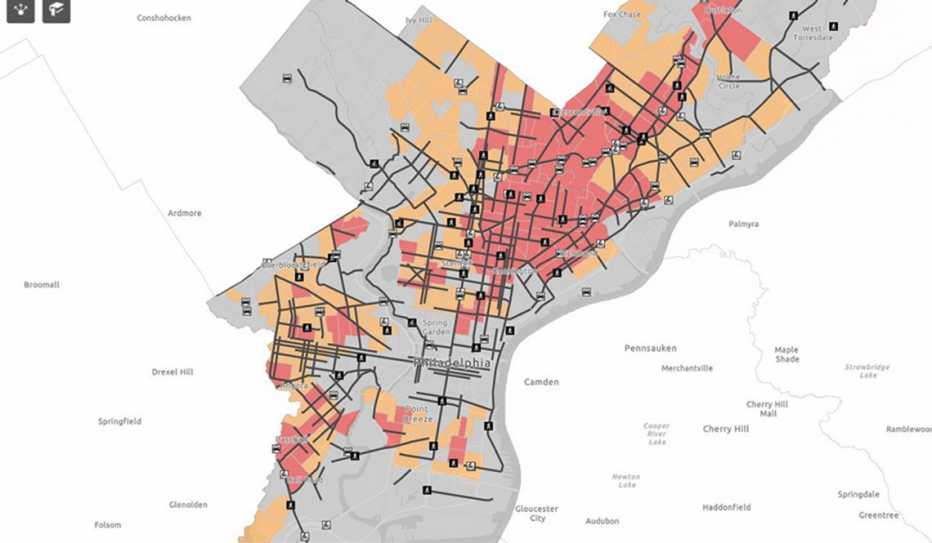AARP Hearing Center


The Community
Philadelphia, Pennsylvania, is home to nearly 1.6 million residents, nearly 1 in 4 of whom are age 55 or older. The city is racially and ethnically diverse: 42 percent of the population is African American, 34 percent is white/non-Hispanic, 15 percent are Hispanic/Latino and 7 percent are Asian.
Partner Organizations


Philadelphia joined the World Health Organization Global Network of Age-Friendly Cities and Communities (a precursor to the AARP Network of Age-Friendly States and Communities) in 2012. The city adopted its age-friendly action plan in 2020.
Community Representatives
- Shalimar Thomas, Executive Director, North Broad Renaissance
- Sarah Clark Stuart, Executive Director, Bicycle Coalition of Greater Philadelphia
Equity Focus
- Age-friendly housing, transportation and outdoor spaces
The Work
Thomas and Stuart describe efforts to develop and implement the 2020 action plan.
Shifting from “Equality to Equity”
The Philadelphia: An Age-Friendly, Livable City for All plan targets housing, transportation, and outdoor spaces and buildings. The overarching goals in each area are:
- To increase the supply of housing that is accessible, affordable (reflecting neighborhood income) and visitable for people of all ages
- To improve the public transit system, increase traffic safety and ensure that our roads and streets are in a state of good repair and welcoming to people of all ages and backgrounds
- To enhance the quality, quantity and accessibility of green spaces in neighborhoods throughout Philadelphia — and improve the physical infrastructure and programming at public facilities such as libraries and recreation centers
"All people, regardless of income, deserve clean streets, well-maintained green spaces and safe public spaces," says Thomas. "It's a basic quality of life issue and will take thoughtfulness and intention to ensure that we walk this path."
"Community groups are looking at the recommendations in the action plan and are incorporating them into their strategic plans. Meanwhile, policymakers are determining the role policy will play, " Thomas adds.
"We've seen COVID-19’s impacts on underserved communities. It shifts the conversation from equality to equity.”
— Shalimar Thomas, North Broad Renaissance
Safer Streets for Seniors and Lower-Income Neighborhoods
“We’ve been deeply involved with the City of Philadelphia's Vision Zero program, which is a multi-agency effort to tackle the public health issue of traffic deaths and reduce them to zero by 2030," Stuart explains. "This issue is of particular importance to the aging community because, according to our analysis of police data, 32 percent of those killed in traffic crashes in 2020 were over 50. Most traffic deaths occurred in census tracts identified as above average for indicators of potential disadvantage, as defined by the Delaware Valley Regional Planning Commission."
The efforts have raised public awareness about the public health crisis of traffic fatalities. "Before Mayor Jim Kenney made traffic safety a priority, fatal traffic crashes were not being systematically addressed and there wasn't a focus on the disproportionate impacts in low-income neighborhoods and on communities of color," Stuart says. "Now an intradepartmental task force is looking at the problem from engineering, planning and education standpoints."
The city's Vision Zero program hasn't yet generated a declining trend in traffic death. "In fact, in 2020, the number of traffic fatalities rose by nearly 80 percent, making it the highest in 23 years," says Stuart. "There is clearly more work to do.”
Related Resources
- Delaware Valley Regional Planning Commission
- Philadelphia: An Age-Friendly, Livable City for All
- Vision Zero Philadelphia
AARP Links
- Learn about the AARP Network of Age-Friendly States and Communities
- Check out the network's Member List
- Connect with AARP Pennsylvania
- Find Age-Friendly Responses to COVID-19
Visit another community: Age-Friendly Network Communities and Equity
Reported by Mary Kay Bailey | Fall 2020 | Population data from the U.S. Census





























































